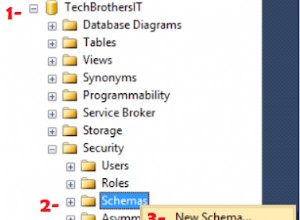Devi scrivere un'annotazione personalizzata per questo e usarla in classe
@AtLeastOneNotEmpty(fields = {"name", "phone"})
public class User{
Implementazione di annotazioni personalizzate
@Constraint(validatedBy = AtLeastOneNotEmptyValidator.class)
@Target({ElementType.TYPE})
@Retention(RetentionPolicy.RUNTIME)
public @interface AtLeastOneNotEmpty {
String message() default "At least one cannot be null";
String[] fields();
Class<?>[] groups() default {};
Class<? extends Payload>[] payload() default {};
}
E validatore di annotazioni personalizzate
public class AtLeastOneNotEmptyValidator
implements ConstraintValidator<AtLeastOneNotEmpty, Object> {
private String[] fields;
public void initialize(AtLeastOneNotEmpty constraintAnnotation) {
this.fields = constraintAnnotation.fields();
}
public boolean isValid(Object value, ConstraintValidatorContext context) {
List<String> fieldValues = new ArrayList<String>();
for (String field : fields) {
Object propertyValue = new BeanWrapperImpl(value).getPropertyValue(field);
if (ObjectUtils.isEmpty(propertyValue)) {
fieldValues.add(null);
} else {
fieldValues.add(propertyValue.toString());
}
}
return fieldValues.stream().anyMatch(fieldValue -> fieldValue!= null);
}
}




